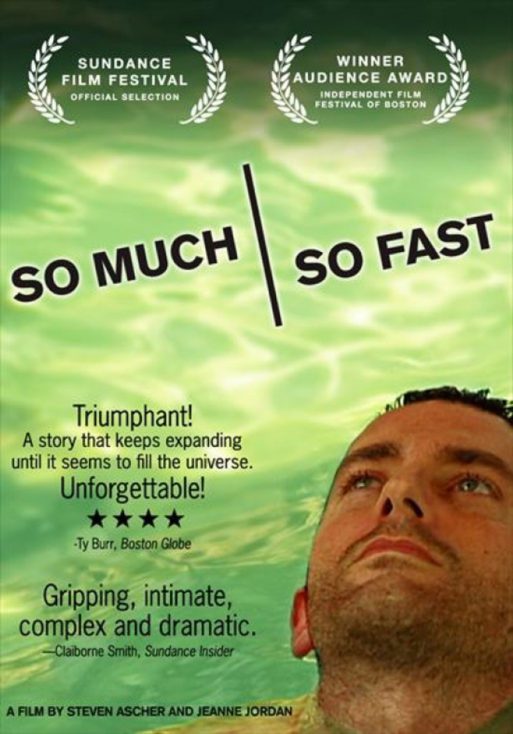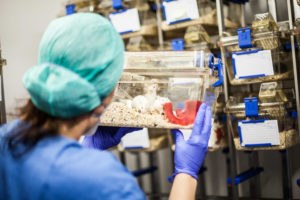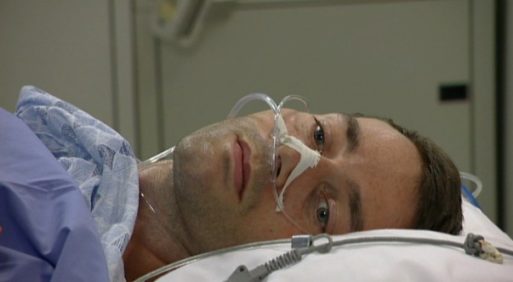 At age 29, master architect Stephen Heywood thought he had decades left to settle down, start a family, and build incredible homes from scratch. But before he had even reached his 30th birthday, Stephen noticed something odd. While working on renovating a house, he found that his hands weren’t functioning properly. He made an appointment with his doctor and found the cause: he had ALS (Amyotrophic Lateral Sclerosis, commonly called Lou Gehrig’s disease). Overnight, his decades-long life expectancy was cut short to just a handful of years.
At age 29, master architect Stephen Heywood thought he had decades left to settle down, start a family, and build incredible homes from scratch. But before he had even reached his 30th birthday, Stephen noticed something odd. While working on renovating a house, he found that his hands weren’t functioning properly. He made an appointment with his doctor and found the cause: he had ALS (Amyotrophic Lateral Sclerosis, commonly called Lou Gehrig’s disease). Overnight, his decades-long life expectancy was cut short to just a handful of years.
Steven Ascher and Jeanne Jordan’s documentary “So Much So Fast” follows Stephen as he comes to terms with his incurable diagnosis, diving deeply into his relationship with his loved ones along the way. The film is half about ALS itself and the technological advances spurred on by those closest to Stephen, and half about the existential dread that can come with a terminal illness.
In many ways, Stephen Heywood considered himself lucky, despite the random nature of his illness (no one in his family had the disease, so it came as a complete surprise to him.) He had a loving girlfriend and a supportive, close-knit family, especially in his brother Jamie. Rather than letting the disease take hold of their lives, everyone close to the Heywoods rallies together, cramming as much life as they can into a short period of time.
First, we witness Jamie Heywood’s obsession over finding a cure for ALS. Known as an “orphan disease,” ALS is one of many illnesses that receive little, if any, research funding because it impacts so few people. After discovering his brother’s illness, Jamie decides to start his own nonprofit biotechnology research company, the first of its kind, to find and test a cure. We watch Jamie struggle through fundraisers, near bankruptcy, and a failing marriage, pushing forward despite the hardships.

Credit: wikimedia.org Jamie Heywood’s company used research mice to find a cure for ALS.
Jamie was also instrumental in keeping up Stephen’s quality of life. Even while his research seems to be spinning its wheels, he creates meaningful, lasting change in his brother’s life. He crafts a special mousepad for Stephen from scratch so that they can continue their competitive video game hobby; he modifies his brother’s wheelchair; he keeps Stephen on the cutting edge of every new advancement in the treatment of ALS.
While Jamie handles the technical side of Stephen’s diagnosis, we see Stephen’s girlfriend (and eventual wife) Wendy carry him through his goals in life. Soon after his diagnosis, Stephen realizes that he wants to get married and start a family while he still can. He asks Wendy to marry him, and they soon have a son named Alexander. Together with Wendy, Stephen packs 10 years’ worth of experiences into half the time.

Credit: YouTube.com Stephen Heywood undergoes treatment for his ALS symptoms
Then there’s Stephen himself, who is joyful and optimistic nearly from start to finish. He immerses himself in a new project: renovating an enormous carriage house. Even as he loses his voice and virtually all movement, with the help of technology he continues to direct the builders like the exceptional architect he was.
In fact, the only time we see Stephen truly distraught in the film is when he comes to the realization that he might not be around to see his son grow up. He wants to be there, witnessing every minute of it, and is willing to make every sacrifice possible to prolong his life for his child.
What “So Much So Fast” teaches us is that all life is shorter than we imagine, but terminal illness helps us see this fact more readily. Watching the Heywoods put every ounce of energy into their goals and treating every hour as a precious gift is an important reminder for us all about living life to its fullest.
As of now, ALS is still an incurable disease, but science is getting close. To find out more, visit the ALS Association website.

 So Much So Fast by Steven Ascher and Jeanne Jordan
So Much So Fast by Steven Ascher and Jeanne Jordan


 “As Tears Go By” by Marianne Faithfull
“As Tears Go By” by Marianne Faithfull

 Funeral Favors Offer Visitors a Tangible Memento
Funeral Favors Offer Visitors a Tangible Memento















